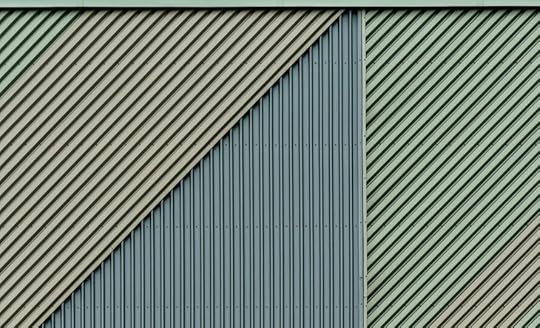The Durability of Composite Cladding: How Long Will It Last?

Composite cladding has become an increasingly popular choice for homeowners and builders due to its combination of durability, low maintenance, and aesthetic appeal. If you’re considering composite cladding for your property, you might be wondering how long it will last and what factors can affect its lifespan. Let’s break down the durability of composite cladding, the factors that impact its longevity, and how to ensure your cladding remains in top condition for years to come.
How Long Does Composite Cladding Last?On average, composite cladding can last between 25 to 40 years, depending on the specific brand, material quality, and how well it’s maintained. This is significantly longer than many traditional materials like timber, which can last 15-20 years with regular maintenance. The impressive lifespan of composite cladding makes it an attractive option that can enhance your home’s exterior.
Factors That Affect the Durability of Composite CladdingWhile composite cladding is known for its durability, several factors can influence how long it will last. Understanding these factors will help you maximise the lifespan of your cladding and ensure it continues to look great for years to come.
1. Material QualityNot all composite cladding is created equal. The quality of the materials used—such as the ratio of wood fibres to plastic and the type of resin used in the production process—can impact how long the cladding lasts. Higher-quality composite cladding typically lasts longer and is more resistant to damage from the elements. When shopping for composite cladding, be sure to choose a reputable brand known for its durability.
2. Installation QualityProper installation is key to ensuring the longevity of your composite cladding. If the cladding is installed incorrectly, it may not perform to its full potential. For example, poor ventilation behind the cladding can trap moisture, leading to swelling, warping, or mould growth over time. Be sure to hire experienced professionals who understand how to properly install composite cladding to ensure its durability.
3. Climate and Weather ConditionsThe climate in your area plays a significant role in how long composite cladding will last. Extreme weather conditions, such as prolonged exposure to intense sunlight, heavy rainfall, or freezing temperatures, can wear down materials faster. Composite cladding is designed to withstand the elements, but harsh weather may cause it to age more quickly. In areas with extreme weather, you may need to perform more regular maintenance to keep it in top shape.
4. MaintenanceOne of the main advantages of composite cladding is its low maintenance requirements. However, like any exterior material, it will still require occasional cleaning and care to maintain its appearance and longevity. Regular cleaning will prevent dirt and debris from building up, which can cause staining or damage. You should also check for any signs of mould, mildew, or moisture damage and address these issues promptly to avoid long-term degradation.
5. Exposure to UV LightJust like with any outdoor material, prolonged exposure to UV light can cause composite cladding to fade over time. While composite materials are often UV-resistant, they may still lose some of their colour or become dull after many years of sun exposure. Some composite cladding products come with UV-resistant coatings that help maintain the colour and appearance of the material, so be sure to check if this is a feature in the product you’re considering.
How to Maximize the Lifespan of Your Composite CladdingWhile composite cladding is a durable and long-lasting material, there are steps you can take to extend its lifespan even further. Here are a few tips to help keep your cladding in top condition:
1. Regular CleaningCleaning your composite cladding regularly will help maintain its appearance and prevent dirt and grime from building up. Use a soft brush, mild detergent, and water to clean the surface. Avoid using harsh chemicals or abrasive materials, as they can damage the surface of the cladding.
2. Inspect for DamageIt’s a good idea to inspect your cladding periodically for signs of damage or wear, such as cracks, warping, or mildew. Early detection of any issues will allow you to address them before they become more serious and costly problems.
3. Trim Overhanging BranchesIf you have trees or shrubs near your property, make sure to trim any overhanging branches that could scratch or damage your cladding. Falling leaves and debris can also contribute to the build-up of dirt and moisture, so keeping your cladding clear will help preserve its integrity.
4. Invest in UV ProtectionSome composite cladding options come with UV-protective coatings that help prevent fading and discolouration. If your cladding doesn’t have this feature, you may want to consider applying a UV-protective treatment every few years to maintain its appearance.
ConclusionComposite cladding is a highly durable and long-lasting material that can enhance the look and protection of your home for decades. With a lifespan of 25 to 40 years, it’s a smart investment for those looking to reduce maintenance and enjoy a beautiful, low-maintenance exterior. By considering factors such as material quality, installation, climate, and proper maintenance, you can ensure that your composite cladding remains in great condition for many years.
If you’re in the market for composite cladding, be sure to choose a reputable supplier and follow best practices for care and maintenance. With the right installation and attention, your composite cladding will continue to protect your home and enhance its exterior for decades to come.
The post The Durability of Composite Cladding: How Long Will It Last? appeared first on Geek Mamas .



